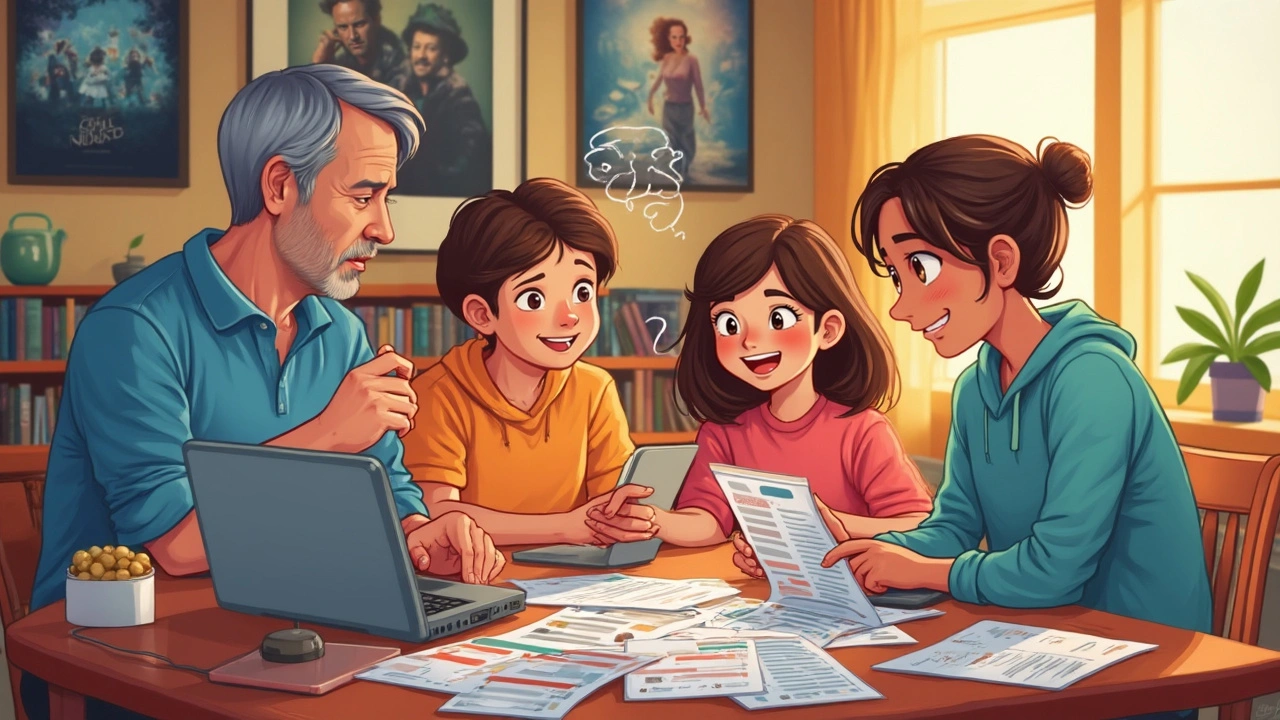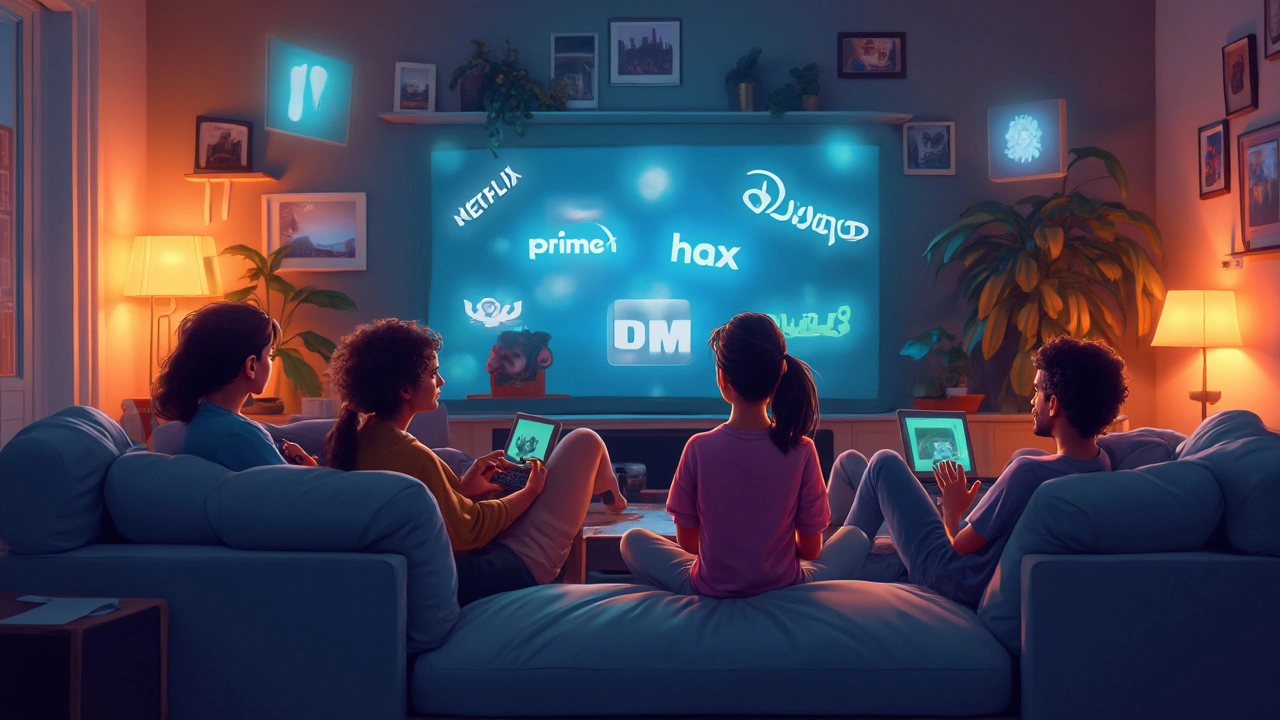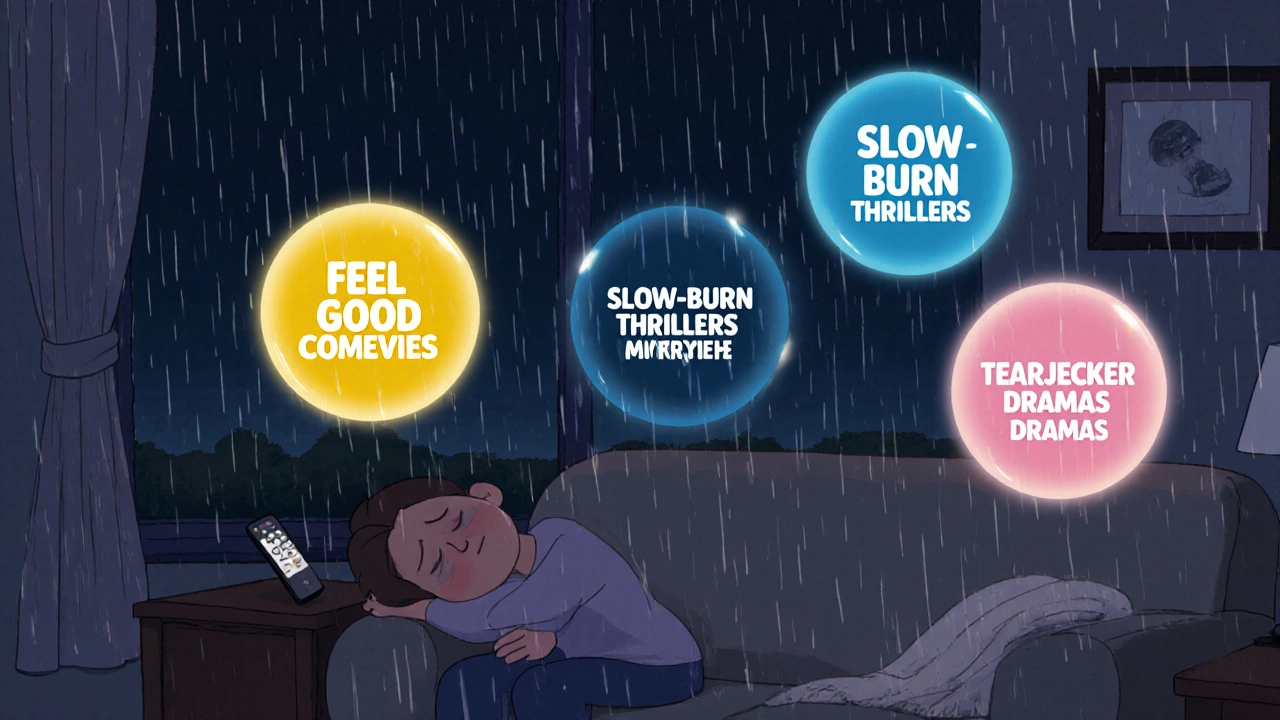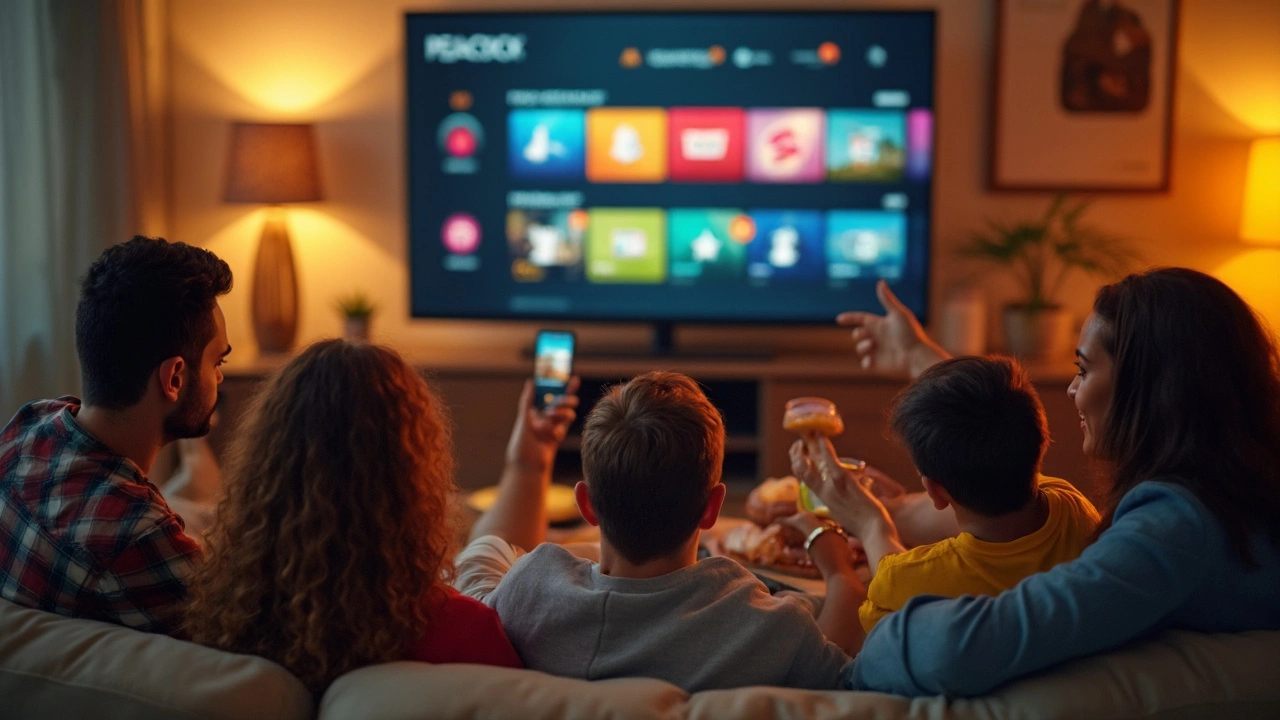Where Your Money Goes: Breaking Down Movie Streaming Costs
If you’ve got more than one streaming app on your device, you’ve probably wondered if you’re actually getting your money’s worth. Prices keep creeping up, bundles pop in and out of existence, and some services split into multiple tiers just to keep things spicy. In April 2025, the big hitters include Netflix, Prime Video, Disney+, Hulu, Max, Peacock, and Apple TV+. Each one tries to lure you in with the promise of the best films—blockbusters, classics, or the latest award-season bait. But how do these subs actually stack up, cashwise?
Let’s look at the monthly rate for the most popular plans (rounded to the dollar for sanity):
| Service | Basic Plan (with ads) | Standard/Ad-Free | Simultaneous Streams |
|---|---|---|---|
| Netflix | $7 | $15.50 | 2 (Standard), 4 (Premium) |
| Prime Video | N/A | $9 | 3 |
| Disney+ | $8 | $14 | 4 |
| Max | $10 | $16 | 2 (Standard), 4 (Ultimate) |
| Hulu | $8 | $18 | 2 |
| Peacock | $6 | $12 | 3 |
| Apple TV+ | N/A | $10 | 6 |
These prices change faster than most people can binge a limited series, but this gives you a good gist. None of these prices include tax. Netflix and Max go higher if you want four screens at once and UHD. A sneaky trick: if you’re on a budget but don’t mind ads, most of the main services now offer cheaper ad-supported tiers. You get the same library—just punctuated by annoying commercials.
Bundling can be a money-saver. For instance, the Disney Bundle gets you Disney+, Hulu, and ESPN+ for less than the cost of each alone. Amazon Prime offers free shipping and other perks bundled with streaming, which is a weird flex, but some folks love it. Sharing passwords used to be the ultimate hack, but recent Netflix and Disney+ crackdowns have made that harder (though not impossible if you’re clever about it). Monthly prices are only half the story—some services drop new movies immediately, while others wait months. So, consider if you’re getting actual fresh films, or just paying for a rerun warehouse.
What’s Actually Worth Watching? Movie Libraries in 2025
It’s crazy how much choice movie fans have in 2025, but every platform has a personality. Netflix still pushes original stuff hard. These days, you’ll find buzzy hits like "Rebel Moon," "The Killer’s Mind," and Oscar-winning documentaries, but they’ve started losing lots of third-party classics. So, if you live for "Back to the Future" or "The Matrix," don’t be surprised when it jumps to Peacock for a few months, then swings back. Still, Netflix drops a new movie—big or small—almost every Friday, making it the go-to for freshness.
On the flipside, Prime Video leans on variety: they throw everything at you, from indie festival hits to Hollywood blockbusters, and even those "watch with ads for free" movies. Prime’s unique because it lets you rent or buy newer releases before they land on any subscription service. That means if you’re dying to watch a recent Marvel flick, this is often the first place you’ll find it (but, warning: they’ll make you pay extra, Prime membership or not).
Disney+ lives in its own universe. This is your only legal streaming home for Marvel, Star Wars, Pixar, Disney animated classics, and National Geographic docs. In 2025, it’s packed with fresh content like "Star Wars: The New Order," "Encanto 2," and a steady drip of Marvel movies that hit Disney+ a few months after theaters. Even adults find themselves binging the Disney vault now and then if nobody’s home.
Now, Max (formerly HBO Max) has a rep for quality over quantity. You get every Warner Bros. film eventually, plus all the DC superhero movies, "Dune" sequels, Studio Ghibli animation, Harry Potter, and, let’s be real, the best library of timeless cinema. If you want movies that are less algorithm and more art, dig here. They’re also king for serious awards season contenders.
For quirky or offbeat tastes, Hulu offers a strange mix: a lot of indie films, some Fox classics, plus whatever FX and Searchlight Pictures just cooked up. This is where weird comedies hide. Meanwhile, Peacock leans on Universal’s stuff—"Jurassic Park," "Fast & Furious," and loads of slasher/horror content. It’s also the only streaming app with a real live TV vibe, tossing in channels and constant SNL reruns.
Apple TV+ looks tiny compared to the rest, but the quality is nuts. It’s "Ted Lasso" for movies—every original gets buzz, even if there aren’t many. Big stars, prestige projects, and the occasional heartbreaker. Think of it as the film snob’s indie video store. If you only care about volume—nothing beats Netflix. If you love franchises or movie nights with kids, Disney+. If you want blockbusters and flexibility, Prime Video. Studios shift their best movies around, so yes, FOMO is real if you don’t subscribe to at least two.

Unique Features and Hidden Tricks for Movie Fans
Everybody just wants that one perfect app, but each service has something sneaky up its sleeve. Take Netflix: they’ve got killer recommendation algorithms and that "Play Something" button. Bored? Just spin the wheel. Netflix’s "Downloads for You" feature even saves new movies directly to your device for those airplane marathons. Not many do it that smartly. In 2025, they’re rolling out interactive film experiences, where you pick choices for characters—almost like a choose-your-own-adventure, but high budget. It’s geeky, but fun.
Prime Video has X-Ray—the neatest party trick in the business. Hold your remote, and it’ll tell you every actor on screen, bits of trivia, and even the exact soundtrack in each scene. Skip the awkward "who is she again?" debates with friends. If you order movies through Prime, sometimes you can host "Watch Parties," syncing streams across households. Great for long-distance movie nights. Also, tons of movies included in Prime membership quietly vanish every month—bookmark what you want when you see it.
Disney+, meanwhile, lets you create up to seven profiles under one account (great for families, roommates, or people with split Disney loyalties). Kids Mode is strict about filtering, so you don’t have to worry about a toddler stumbling onto Deadpool. In 2025, Disney+ upped the ante with bonus content—behind-the-scenes, deleted scenes, even commentary, all inside the app. For hardcore Marvel or Star Wars nerds, these extras can be a rabbit hole.
Max does right by film buffs with curated collections—whether you want Academy Award winners or directors’ marathons, it’s all grouped together. If you geek out over classic cinema, Max is the only mainstream streamer dropping fresh 4K remasters on the regular, plus tons of films aren’t available anywhere else. If you catch a "Leaving Soon" warning, don’t procrastinate—Max moves stuff faster than you think.
Peacock’s free tier actually gives you access to a few movies, but for the full experience (including new Universal films), you’ll need a paid plan. Love live sports or late-night talk mixed into your movie horizon? Peacock’s the only service where you can jump from "Jaws" to Premier League or "Tonight Show" instantly. Hulu keeps its eye on TV more than movies, but occasionally drops day-after-theater indie premieres nobody else has. Apple TV+ is all about quality over volume, and if you own other Apple gear, AirPlay and offline downloads feel seamless. Don’t underestimate how nice that simple design is for less techy movie watchers.
Here’s a sneaky tip: stack free trials if you’re a movie glutton. Most services offer 7 to 30 days free. Plan your movie binge weekends and cancel with zero guilt. If you have a credit card through a major bank, or buy a pricey phone/TV, check for promos—many throw in three–six months free for new customers each year.
Should You Commit, Bundle, or Rotate? How to Choose Your Best Movie Subscription
With more streaming services than ever, analysis-paralysis is real. You don’t have to subscribe to every service, though fear of missing out can hit hard with all the limited-time exclusives. The savviest movie fans treat streaming like gym memberships—switch in and out as your tastes (or wallets) change season to season. Here’s how to make it less of a headache.
If you’re deep into sequels/franchises (think "Marvel," "Harry Potter," "Fast & Furious"), you’ll need the Disney+ and Max combo, since those are their kingdoms now. For sheer number of new movies, Netflix is champion, especially for international films. If your favorite is whatever’s just left the theater, Prime Video almost always rents it early (for a few bucks extra) before it drops to any sub. For families, the Disney Bundle (Disney+, Hulu, ESPN+) is still the value king, especially once you factor TV and sports access. Love curated movie nights or want to catch up on the Criterion Collection? Consider adding Max or a specialty boutique like Criterion Channel.
Most people only have time for two or three streaming services max. Rotate them every few months—catch what’s new, then cancel until something fresh pops up. Look up apps like Reelgood or JustWatch; they track where each movie is available, sparing you the 3am search spiral. It never hurts to share costs—if you live with family or close friends, split the monthly bill and build different watchlists. Just beware: both Netflix and Disney+ now charge extra for separate households, but you can still manage it under one roof.
If you’re big on 4K movies, read the fine print. Netflix, Max, and Disney+ gatekeep true UHD on their pricier plans. If you’re happy with regular HD, the ad-supported plans save a ton but come with more commercials than cable TV ever had in the 2000s. Make sure to check your internet speed (at least 25 Mbps for 4K)—it sucks to buffer during the climax.
Don’t overlook device support—some new streaming sticks and TV brands cut deals that lock out certain apps. Apple TV+ is on fewer devices than you’d think. Also, some platforms like Max and Disney+ let you download for offline watching, but ad-supported plans may limit those rights.
If you’re in college or a teacher, ask about student discounts. Even in 2025, some services throw hefty discounts for students, educators, or even first responders—often not advertised unless you hunt on their sites. And finally, keep an eye on the calendar: many new services drop buzzy exclusives in winter/holiday season, so time your signups for the annual best-of-movies dump.
In the end, the "best" movie subscription is your personal sweet spot—nobody wants to be the sucker paying for everything. Set a reminder every few months to check out what’s new, and don’t be afraid to hit that cancel button. Movies—and your wallet—appreciate the break every now and then.




Kendall Storey
July 17, 2025 AT 22:29Honestly, choosing the right streaming service in 2025 is becoming an intricate game of content curation and cost-efficiency. Netflix still holds a hefty catalog and global reach, but the recent surge of Prime Video with its exclusive releases and bundled benefits like free shipping gives it a competitive edge.
I've been diving deep into the nuances of Max and Disney+ lately. Max's integration of HBO originals and Warner media library is a powerhouse, but Disney+'s family-friendly vault and marvel universe make it indispensable for certain demographics.
Pricing-wise, it’s a juggling act. Some platforms are inching upwards with their subscription fees, but the content exclusives sometimes justify that. The article nailed it by pointing out the unique features that spell the difference between services in 2025 – like offline downloads, multiple screen policies, and 4K content availability.
Any thoughts on the long-term sustainability of these subscriptions? I feel consumers might start consolidating to fewer platforms given the rising monthly costs.
Gabby Love
July 20, 2025 AT 13:13I appreciate how the article lays out the streaming services practically and without bias. It's refreshing to see a clear breakdown rather than the usual marketing fluff.
The way they compare pricing alongside the selection and features really helps in decision-making. For instance, not everyone needs the vast selection if they mostly watch family shows or animated series, making Disney+ more cost-effective in those cases.
One area that could have been expanded is the user interface and ease of content discovery. Sometimes it’s not just about what’s available but how effortlessly you can find it.
From experience, I find Prime Video's interface a bit cluttered, which can diminish your streaming experience, despite the value it offers.
Jen Kay
July 22, 2025 AT 05:46Oh, the streaming wars of 2025, where everyone’s wallet cries but none want to miss their beloved shows. It’s fascinating how the article tries to be all unbiased and analytical, yet the biases sneak in with those so-called "unique features."
Disney+ is, for example, weaponized with nostalgia, which is honestly a brilliant move to keep subscribers hooked. And Max probably thinks its HBO content is a giant middle finger to its competitors — which it might be.
But can we seriously talk about how these services sometimes release shows only to pull them abruptly, making you wonder if they want you committed or just hanging on their churn stats?
I’d love to see more on contractual limits and what happens to your watchlist when shows vanish. That’s the real pain point they glossed over.
Andrew Nashaat
July 24, 2025 AT 03:20First of all, let me just highlight the absolute necessity of clarity and precision when discussing these subscriptions. That article did a decent job, but I couldn't help noticing a few misplaced commas and inconsistencies that would have benefitted immensely from tighter editing. Proper syntax is not just academic; it influences the reader's comprehension and trust.
Now, onto content: Netflix’s pricing model is increasingly convoluted. Different tiers offer different resolutions, and it’s an absolute nightmare for the consumer trying to just watch in 4K without signing a contract longer than a mortgage.
Prime's bundling remains the smartest move, no doubt. It’s a masterclass in maximizing consumer value while maintaining revenue streams through service synergy.
What the article could improve on: a bullet-point list of pros and cons for each service. Long-form rants are all good and well, but quick overviews have their place.
Gina Grub
July 26, 2025 AT 19:46Ugh, the endless circus that is streaming now! The article is a decent attempt but nothing revolutionary. The jargon-heavy content felt like it needed trimming. They could’ve been more direct, you know?
I swear, every month, there’s some new service popping up who promises the moon and stars, but when it comes to actual content — meh. Max and Disney+ are battling like gladiators in the ring, but what good is a huge library if half the shows are reboots or spin-offs nobody asked for.
And let's not even touch on the regional locks and patchy catalogs. How can you compare fairly when what you get in the UK is vastly different from the US subscription?
Precision in comparison matters—it's about what you can practically watch, not just what they claim.
Nathan Jimerson
July 29, 2025 AT 16:06Looking at these subscriptions from an optimistic viewpoint, it’s great to see how competition is driving innovation in the streaming space. The article rightly highlights some surprising features, like interactive content and AI-curated recommendations, which really help tailor the watching experience.
One thing I’d encourage everyone to consider is which platform aligns with their viewing habits rather than chasing every buzz. More content doesn’t necessarily mean better satisfaction.
The pricing comparisons are useful, but equally important are policies regarding family sharing and multiple device access. Sometimes those little details define the overall value you get.
Let’s hope these services keep evolving positively rather than just hiking prices.
Eric Etienne
August 1, 2025 AT 02:10Man, I've gotta say, I tried Netflix again after reading this, and honestly, it just feels like more of the same. Same old shows, same old fees, just thrown in your face.
Prime Video is slightly better, but the UI can be a nightmare — half the time, you click something and it’s not even included without paying extra. Rude.
Max? Meh. Disney+ though, if you’re into that kind of thing (superheroes and princesses), probably your best bet. But for me, I'm just too lazy and picky to juggle multiple apps.
Anyone else burnt out by the constant switching from one platform to another? It’s exhausting and just makes me want to pirate or stick to old DVDs.
Dylan Rodriquez
August 3, 2025 AT 18:20It's intriguing how the article balances the pros and cons but I feel like there’s an underlying philosophical debate about the commercialization of leisure here that we're not addressing enough.
The fragmentation of content into multiple subscriptions may ultimately erode the joy of spontaneous viewing and create a tiered system of who gets access to what entertainment, which feels increasingly exclusionary.
We should consider how these services treat the art of storytelling when their goal is so profit-driven, which sometimes results in a plethora of mediocre productions rather than a few truly transcendent ones.
The article is a good start, but there’s a bigger conversation to be had about the cultural impact of how we consume media in the streaming era.
Amanda Ablan
August 6, 2025 AT 19:40I found the breakdown in the article very helpful when I was debating which services to keep or drop. Having kids, Disney+ is a no-brainer for us. But I was surprised to learn about some hidden features on Prime that improved our family’s viewing setup significantly, like multiple profiles and parental controls.
I also appreciate the mentioning of 4K and offline downloads as those factors really matter if you're often on the go.
Though the article could have mentioned compatibility with devices like smart TVs or gaming consoles, which can be a pain point for some users.
Overall, it’s great to have a resource that doesn’t just push one subscription as the ultimate winner but really invites you to personalize your choice.
Meredith Howard
August 10, 2025 AT 06:26From a strictly formal perspective, the article’s methodological approach to comparing streaming platforms was commendable, taking into account a multitude of relevant parameters. However, I found certain statistics to lack citation, which might leave the discerning reader seeking more concrete evidence.
Additionally, exploring subscription fatigue and consumer psychology could have enriched the discussion about pricing strategies effectively employed by these services.
Still, the piece provides a valuable snapshot of the streaming landscape in 2025, assisting those trying to make an informed purchase without falling for marketing gimmicks.
Perhaps future updates might incorporate user satisfaction surveys to further validate the service rankings.